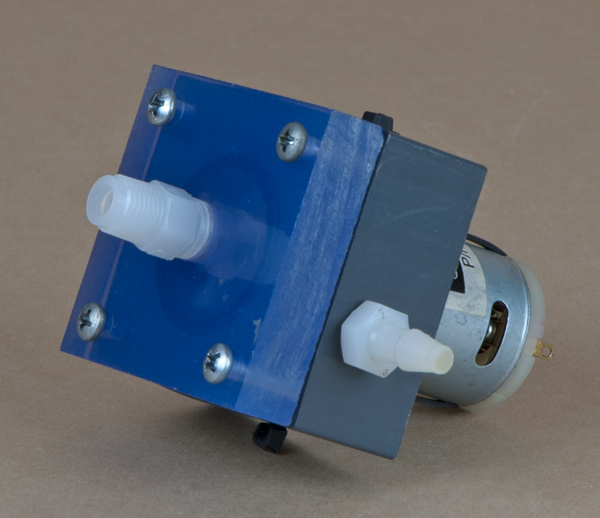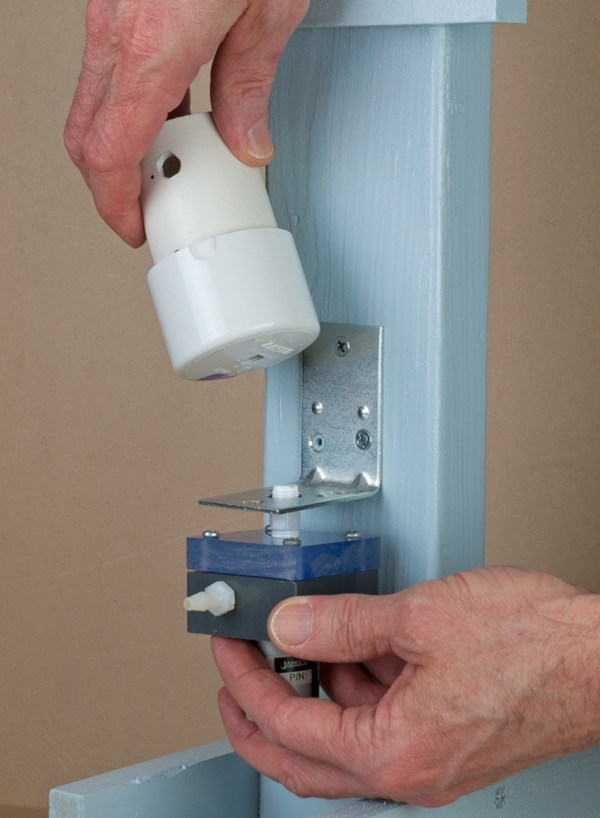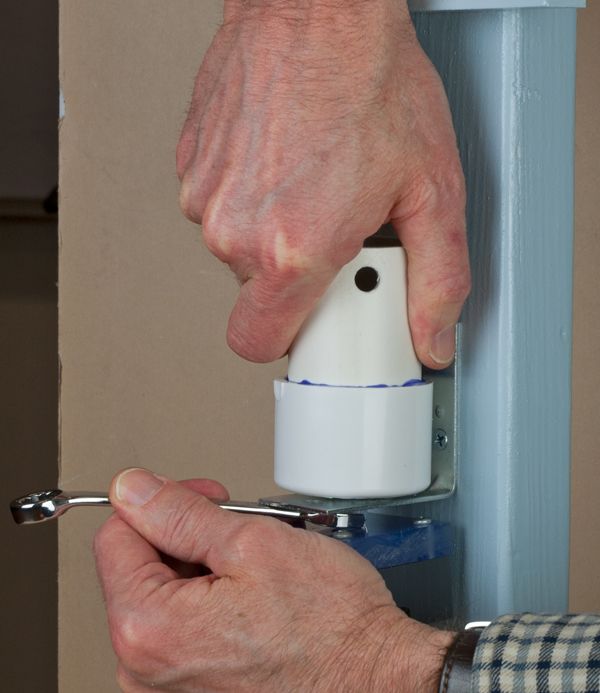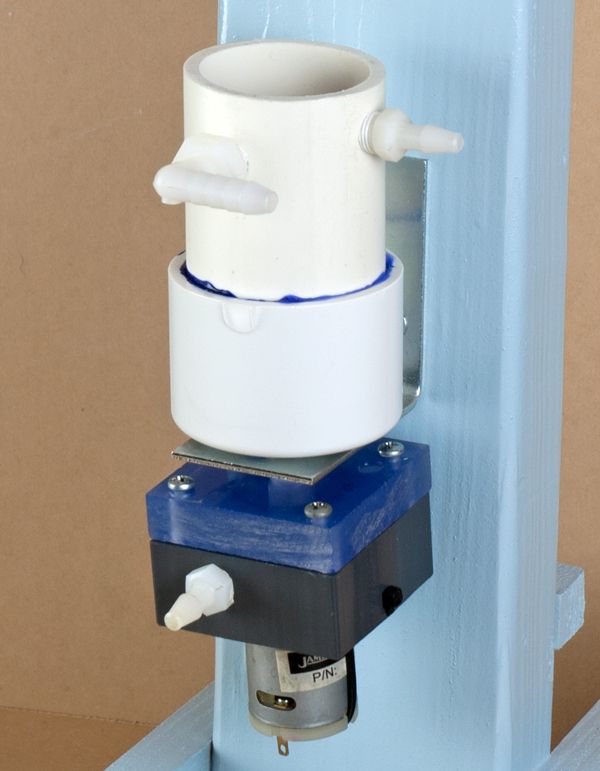Attach the Pump and Tank to the Platform
This web page gives instructions for attaching the pump and PVC tank to the fish tank platform. Instructions for assembly of the sensor loop plumping are divided into the following steps.
Return to the main page for the assembly of the salinity loop plumbing.
Replace the barbed fitting on the pump inlet
To measure the pump curve, nylon tubing was connected to the pump inlet with a barbed fitting. When the pump is attached to the flow loop for the fish tank, the inlet to the pump is rigidly connected to the bottom of the PVC tank with a threaded nipple. Therefore, before attaching the pump to the fish tank platform, replace the barbed fitting on the pump inlet with a threaded nipple.
Apply Teflon tape to the nipple before threading it into the cover plate of the pump. Use a wrench and only modest torque to tighten the nipple into the cover plate.
Before proceding, it would be a good idea to maker sure that you have not turned the nipple too far into the cover plate. Hook the pump up to a 12V power supply to test the impeller turns freely.

Align the pump and PVC Tank
Apply a layer of Teflon plumbing tape to the nipple threads.
Insert the nipple through the hole in the L-bracket from below.

Tighten the PVC tank onto the nipple
Turn the PVC tank onto the threads of the nipple. Turn the tank, not the nipple.
Use a wrench to hold the nipple so that it does not tighten further into the cover plate of the pump.

Insert the barbed fittings into the top of the PVC tank
Apply a layer of Teflon plumbing tape to the two barbed fittings: one straight and one right-angled. Turn the right-angled fitting into the front hole on the PVC tank (the overflow hole). Turn the straight fitting into the side hole of the PVC tank.

Next Step
The next step is to locate the salinity sensor and connect the nylon tubing